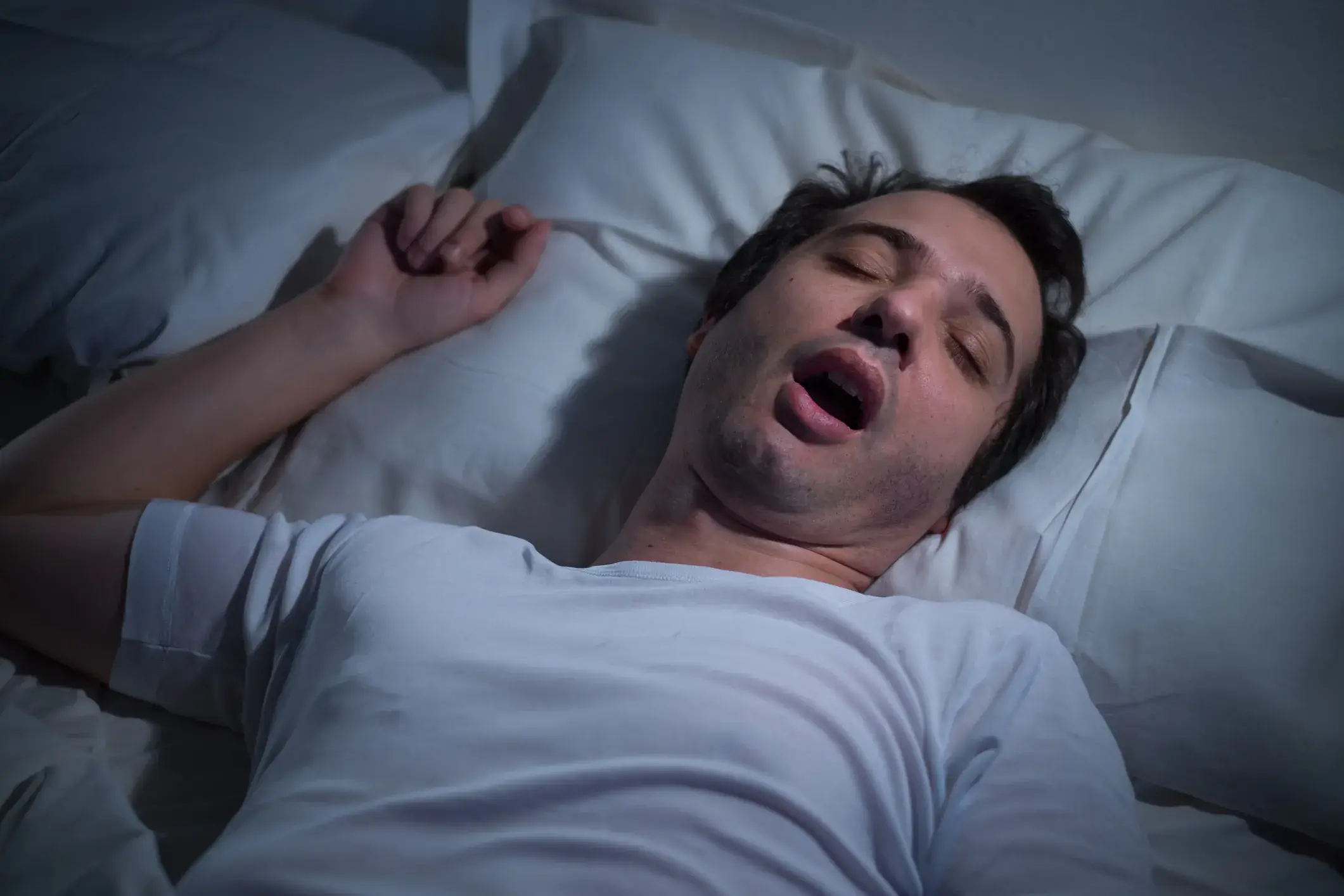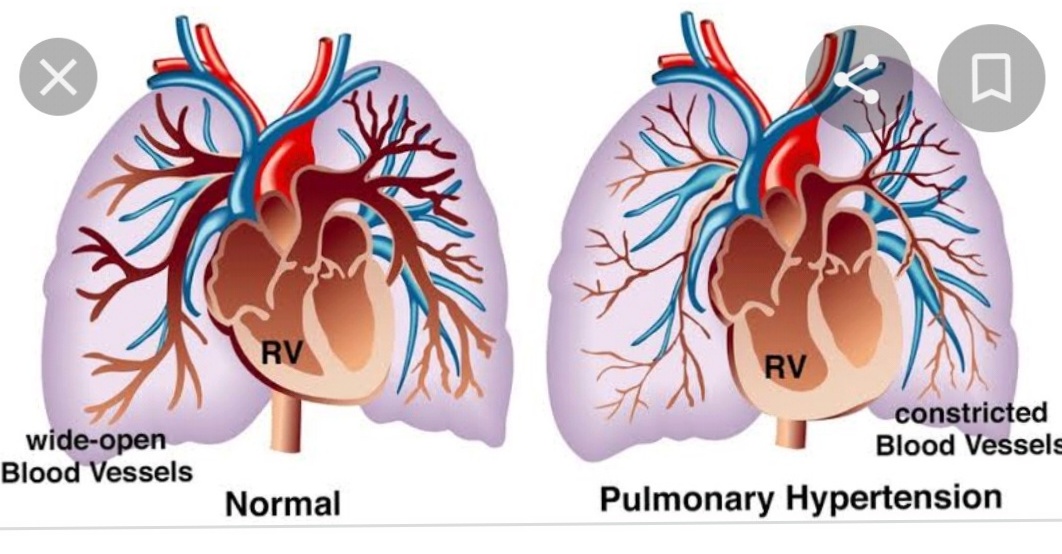How to stop mouth breathing at night-various aspects-
-by ENT specialist doctor-Dr Sagar Rajkuwar, Nashik ,Maharashtra ,India -clinic website-
www.entspecialistinnashik.com
Introduction-
Is it common for you to wake up feeling more fatigued than when you went to sleep, with a dry mouth, or a sore throat? Nighttime mouth breathing might be the cause, if so. Breathing through the mouth during sleep might cause snoring, foul breath, dental issues, and perhaps even persistent health issues in addition to interfering with your rest. The positive aspect is that nighttime mouth breathing may often be controlled if you understand its cause and how to treat it. This piece will examine the frequent causes of nocturnal mouth breathing and offer realistic advice on how to quit mouth breathing at night in order to improve sleep and general well-being.
You might attempt mouth taping, using nasal strips or a humidifier, and improving nasal airflow by treating congestion to cease nighttime mouth breathing. If these aren’t helpful, see a physician or expert to rule out any underlying problems, such as sleep apnea, or to address structural issues that may be interfering with nasal breathing.
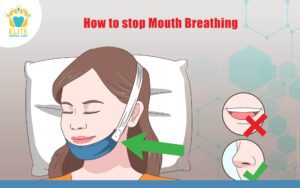

A more thorough explanation is provided below:
Table of contents-
1. Take Care of Nasal Congestion:
2. Enhance Sleeping Posture:
3. Think About Mouth Taping:
4. Seek Expert Assistance:
5. Therapy for myofunctions:
6. What does it mean to breathe through your mouth?
7.Signs and Reasons
8.Tests and Diagnosis
9.Management and Treatment
10.Investigations in moth breathing at night-
1. Take Care of Nasal Congestion:
Treat colds or allergies:
Use recommended medications such as antihistamines, nasal decongestants, or steroid nasal sprays if nasal congestion is brought on by allergies or a cold.
Saline Spray:
According to Raleigh Capitol Ear, Nose, Throat & Allergy, use a saline spray to hydrate nasal passages and aid in clearing congestion.
Humidifier:
To increase humidity and alleviate dryness and congestion, use a humidifier.
Nasal Strips:
By opening up nasal passages, nasal strips can improve airflow.
2. Enhance Sleeping Posture:
Lift Your Head: Use a wedge pillow or extra pillow to raise your head while you sleep. According to WebMD, this can help lessen nasal congestion and make it easier to breathe via your nose.
Get Some Side Sleep: Don’t sleep on your back since it can make mouth breathing worse.
3. Think About Mouth Taping:
Taping the mouth shut:
Using a particular porous tape to tape one’s mouth shut can help some people breathe through their nose while they sleep. However, it’s essential to speak with a doctor or expert before attempting this, particularly if you have sleep apnea or any nasal blockage.
The reasons behind why it works are:
Tape can aid in teaching the body to breathe through the nose, as well as lessen snoring and dry mouth.
4. Seek Expert Assistance:
Specialty or Doctor:
It is essential to see a doctor or expert (dentist, myofunctional therapist, or ENT) if you continue to breathe via your mouth at night.
Underlying Disorders:
They may assist in identifying if your mouth breathing is caused by underlying diseases like allergies, sleep apnea, or structural problems in your nose.
Therapy Choices:
They may advise therapies like myofunctional therapy, medicines, or surgery (if necessary), depending on the diagnosis.
5. Therapy for myofunctions:
Physical Exercises:
Myofunctional treatment aims to enhance breathing patterns and tongue posture by retraining and strengthening the muscles of the mouth and tongue through exercises.
Tongue Placement:
This treatment will teach you how to maintain your tongue in the proper position against the roof of your mouth, which is essential for healthy nasal breathing.
Expert Assistance:
For adequate training and exercises, it’s crucial to collaborate with a skilled myofunctional therapist. Breathing through the mouth
The term “mouth breathing” refers to continuous breathing through the mouth. You may do this if air is unable to enter via your nose. A child’s conduct may be influenced by mouth breathing, which can alter the form of the face. The problem preventing you from breathing through your nose can be treated with medicine or surgery.
What does it mean to breathe through your mouth?
Poor breath and daytime tiredness are signs of breathing through the mouth.
Adults are not at risk from mouth breathing. In youngsters, however, mouth breathing can have an impact on development and behavior.
It can make sense to breathe through your mouth, which occurs when you often breathe through your mouth rather than your nose, while you’re running to catch a bus. However, when mouth breathing is the only way you breathe, it can be a problem. Adults who breathe via their mouths don’t have a major health problem. However, children who breathe through their mouths may experience changes in their development and conduct. It could potentially alter the shape of their faces.
Signs and Reasons
Signs of breathing via the mouth
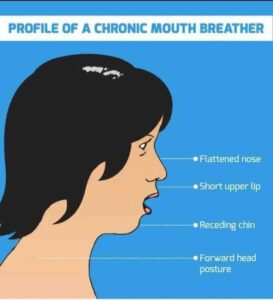

Children and adults are both impacted by breathing via the mouth. Typical signs include:
- Terrible breath
- Drooling while sleeping
- Mouth that is dry
- Always experiencing fatigue
- Hoarseness
- snoring
In addition to other symptoms, mouth breathing in youngsters may result in the following:
Facial appearance of mouth breathing: A child’s face might change shape if they breathe through their mouth rather than their nose. Their faces may be thin. It’s possible that their chin or jaw is receding. It’s possible that their upper and lower teeth are not aligned.
Growth Problems: Children’s growth issues are not directly caused by mouth breathing. However, youngsters occasionally breathe via their mouth because something, like hypertrophic adenoids, obstructs their airway. According to studies, airway difficulties in youngsters prevent the pituitary gland from producing adequate human growth hormone (HGH), which can have an impact on development.
Behavioral problems: According to several experts, children who breathe through their mouths may also have sleep apnea or other sleep-related disorders. They may be restless and irritable due to a lack of sleep. This may result in other behavioral problems, such as those associated with attention deficit/hyperactivity disorder (ADHD).
breathing through the mouth results in
The majority of individuals breathe through their mouth because they are unable to take air via their nose. Factors that might prevent air from passing through your nose include:
Septal deviation: When the septum—the cartilage and bone that separates the interior of your nose—leans to one side and obstructs your airway.
Turbinate enlargement: Turbinates are nasal structures. The air passing through it is cleaned and humidified. It may be difficult to breathe through your nose if your lower turbinates become inflamed due to allergies, infections, or irritation.
Enlarged adenoids or tonsils: Children who mouth breathe may have swollen or infected adenoids or tonsils that obstruct their airways.
A stuffy nose, caused by allergies, a cold, or persistent sinusitis, forces you to breathe via your mouth.
A nasal polyp is a growth in your nose. In the event that swollen or inflamed nasal polyps make it difficult for air to flow through your nose, you may breathe through your mouth.
Sleep apnea: This illness causes you to pause breathing when you’re sleeping, which interferes with your ability to have a good night’s sleep.
Tests and Diagnosis
The methods used by doctors to diagnose this illness
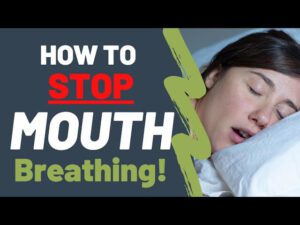

A medical professional will do a physical examination. They will examine the interior of your nose and throat. They could conduct experiments such as:
Lip seal test: This test determines if you are able to breathe even when your mouth is shut.
The mirror test, in which your healthcare professional looks for clouding or condensation by holding a mirror beneath your nose, is one example. Symptoms of nasal breathing include those.
Water test: You hold water in your mouth, which necessitates breathing through your nose.
Management and Treatment
What are the treatments for breathing through the mouth?
The disorder that prevents you from breathing through your nose will be treated by a healthcare professional. The following therapies may be advised or prescribed by them:
Steroid nasal sprays or antihistamines to lessen allergy symptoms
When a cold causes a blocked nose, antihistamines and decongestants can be beneficial.
A sinus infection that persists for more than ten days requires antibiotics.
They may suggest that you or your kid have surgery, such as:
Adenoidectomy: To get rid of diseased or enlarged adenoids that obstruct your child’s airway, they can perform this surgery.
Septoplasty: This operation corrects a deviated septum, making it simpler for you to breathe through your nose.
Turbinate reduction is a procedure that shrinks the size of turbinates in your nose to facilitate airflow.
When should I get medical help?
If you experience signs of mouth breathing, such as foul breath or drool on your pillow, speak with a healthcare professional. If you see that your kid frequently breathes through their mouth or has signs of mouth breathing, see your child’s pediatrician for a nose and airway examination.
Is it possible to stop mouth breathing?
In youngsters, mouth breathing can turn into an unhealthy habit. You can help avoid that by:
looking out for blocked nostrils. Children with persistent nasal congestion are more prone to breathe via their mouths. Treating the congestion will be beneficial.
Their sleeping routines are monitored. If your child snores or has difficulty sleeping, they may have nasal breathing problems.
If you find that you are breathing through your mouth more than your nose or suspect that you are mouth breathing while you sleep, speak with a healthcare professional. (A dry mouth, foul breath, and drool on your pillow are all signs that you may be mouth breathing.) They will determine the reason why you are unable to breathe air through your nose.
Perhaps the cause of your dry mouth and drool on your pillow when you wake up is mouth breathing. However, mouth breathing can result in a variety of problems, including a wet cushion and a parched pout. In addition, it may disrupt your sleep and result in severe morning bad breath. Your kid’s mouth breathing might result in behavioral problems or changes to their facial structure. Fortunately, mouth breathing can be treated by healthcare professionals by identifying the underlying cause.
Investigations in moth breathing at night-
When nighttime mouth breathing results in snoring or sleep apnea, it should be looked into. Physical examinations, such as inspecting the mouth, nose, and throat for abnormalities, as well as inquiring about symptoms and medical history, are methods a healthcare practitioner might use to identify mouth breathing. Additional research might include sleep studies, such polysomnography, to track breathing patterns, blood oxygen levels, and other variables throughout sleep.
The investigation process is described in greater depth below:
1. Physical Evaluation:
Visual examination:
The mouth, nose, and throat will be examined by doctors for any indications of edema, nasal polyps, or other blockages that may be causing mouth breathing.
Observation of Breathing Patterns:
The way a person breathes will be monitored by physicians to determine whether they are mainly using their mouth or nose.
Medical Background:
A thorough symptom history will be taken, including when mouth breathing was initially observed, what makes it better or worse, and any related issues like snoring, migraines, or daytime sleepiness.
2. Testing for diagnosis:
Investigations into Sleep (Polysomnography):
Includes overnight monitoring at a sleep center or with a home sleep test. During sleep, the equipment monitors heart rate, brain activity, respiratory patterns, blood oxygen levels, and body movements.
Lip Closure Test:
According to the Cleveland Clinic, this test evaluates a person’s capacity to breathe with their mouth shut.
Test using a mirror:
According to the Cleveland Clinic, a mirror is placed beneath the nose to look for condensation, which may be a sign of mouth breathing.
3. Additional research:
Referral to ENT Specialist:
A referral to an ear, nose, and throat (ENT) specialist may be necessary if any abnormalities are discovered in the nose or throat.
Lung Function Tests:
These tests may be administered to evaluate lung capacity and function, particularly if asthma or other respiratory illnesses are suspected.
Studies Using Imaging:
To find any structural problems, CT scans or X-rays of the nasal passages may be performed.
For important health related topics please click on our facebook page link given below or copy paste this link into google search –
https://www.facebook.com/positivemind.healthcare
For important health related videos please click on the link of our youtube channel given below or copy paste this link into google search-
http://www.youtube.com/@healthuseful8539/
Summary/Conclusion: Mouth Breathing and Its Management
Mouth breathing occurs when airflow through the nose is obstructed, often due to colds, allergies, enlarged tonsils/adenoids, deviated septum, nasal polyps, or chronic sinus issues. While occasional mouth breathing (like during exertion) is normal, persistent mouth breathing can cause bad breath, dry mouth, fatigue, snoring, drooling, and in children, may affect facial development, growth, and behavior.
Management Strategies:
-
Relieve Nasal Congestion – Use antihistamines, decongestants, nasal steroid sprays, saline sprays, humidifiers, or nasal strips.
-
Improve Sleeping Posture – Elevate the head or sleep on the side to ease nasal breathing.
-
Mouth Taping (with caution) – May encourage nasal breathing, but only under medical supervision.
-
Seek Expert Care – An ENT, dentist, or myofunctional therapist can identify underlying issues such as sleep apnea, allergies, or structural blockages.
-
Myofunctional Therapy – Exercises to retrain tongue and mouth muscles, improve tongue posture, and encourage nasal breathing.
Treatment Options: Depending on cause, doctors may prescribe medications (antihistamines, steroids, antibiotics) or recommend surgical procedures such as adenoidectomy, septoplasty, or turbinate reduction.
When to See a Doctor:
-
Persistent mouth breathing
-
Snoring, poor sleep, or behavioral changes in children
-
Symptoms like foul breath, daytime fatigue, or recurrent nasal blockage
Key Point: Mouth breathing is not usually dangerous in adults but may significantly affect children’s growth and behavior. Early medical evaluation and treatment of underlying causes are crucial.
References-
This article is written as per the clinical experience of ENT Specialist doctor -Dr Sagar Rajkuwar(MS-ENT) ,Nashik Maharashtra -Clinic website-www.entspecialistinnashik.com References taken from- https://my.clevelandclinic.org/
For link on you tube video on -how to stop moth breathing at night please click on the link given below-

